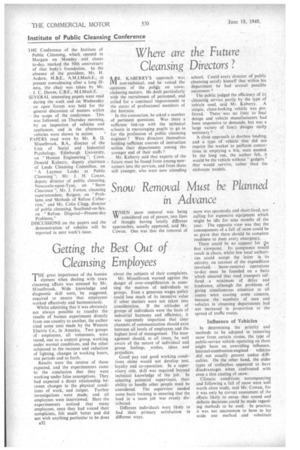Where are the Future Cleansing Directors ?
Page 34

If you've noticed an error in this article please click here to report it so we can fix it.
MR. KA BER RY'S approach was non-technical, and he voiced the opinions of the pubic on townclansing matters. He dealt particularly with the recruitment of personnel, and called for a continual improvement in the status of professional members of the Institute.
In this connection, he asked a number of pertinent questions. Was there a sufficient link-up with the technical schools in encouraging pupils to go in for the profession of public cleansing engineer ? Were directors themselves holding sufficient courses of instruction within their departments among the younger end of their staffs ?
Mr. Kaberry said that experts of the future must be found from among bewcorners into the services, and from those still younger, who were now attending school. Could every director of public cleansing satisfy himself that within his department he had several possible successors ?
The public judged the efficiency of its cleansing service partly by the type of vehicle used, said Mr. Kaberry. A simple, clean-looking vehicle was preferred, There was no limit to final design and vehicle manufacturers had been responsive to demands, but was a large variety of fancy designs really necessary ?
A close approach to dustless loading, and a type of vehicle that did not require the worker to perform contortions in emptying a bin, were needed. In the long run, the author felt, it would be the vehicle without " gadgets" that would survive, rather than the elaborate models.




















































































